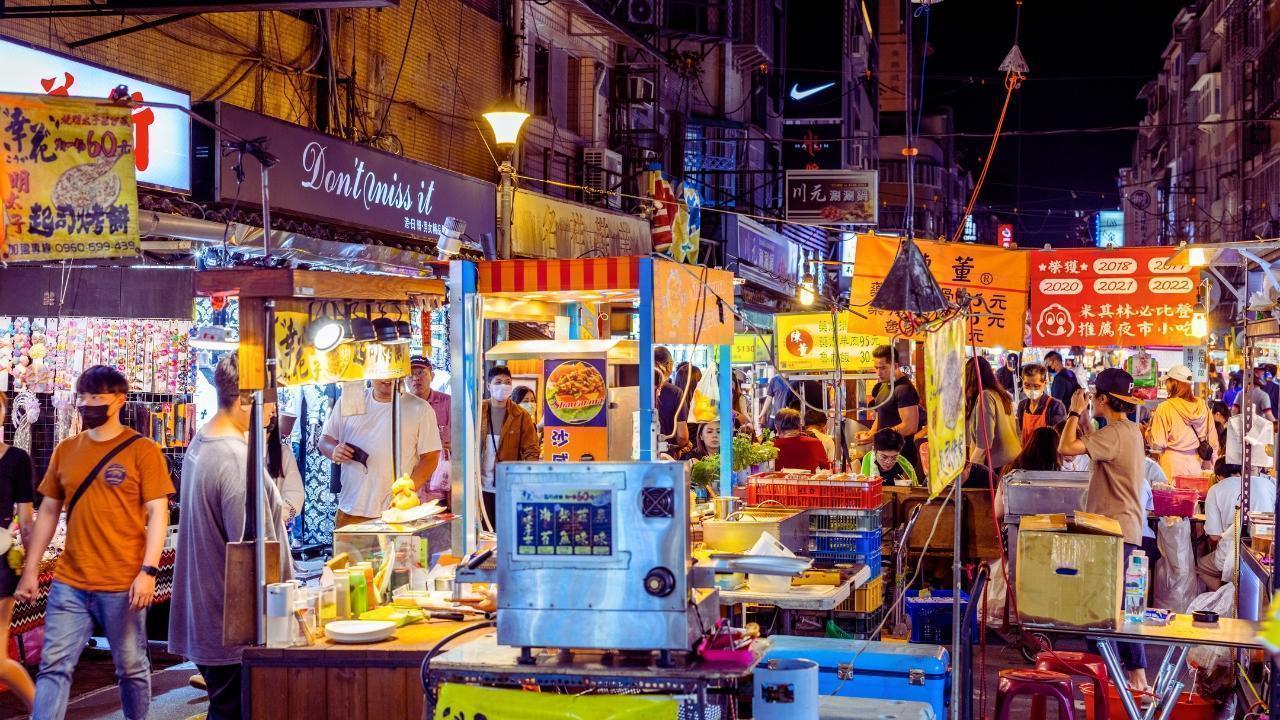
Join 10k+ people to get notified about new posts, news and tips.
Do not worry we don't spam!

Post by : Anis Farhan
When the sun goes down, the lights of cities flicker to life, and in recent years, a new cultural norm has quietly been simmering — midnight dining. No longer the realm of truck stops, student hangouts, or post-party cravings, late-night dining is becoming a deliberate, celebrated, and often luxurious affair across major urban centers.
From Bangkok’s boat noodle boats open till 4 a.m. to New York’s 24-hour Korean BBQ joints, and from Dubai’s midnight dessert lounges to Tokyo’s ramen alleys open till dawn, midnight dining is no longer about just grabbing a bite — it’s a reflection of the shifting rhythms of modern life.
In a world that increasingly values flexibility, spontaneity, and experience, all-night eateries are filling more than stomachs. They're satisfying a growing cultural appetite for belonging, novelty, and connection — all under moonlight.
The rise of remote work, gig economy jobs, and multiple time zone teams has made the traditional 9-to-5 obsolete for millions. Today, people may end their workdays at midnight, or need fuel at 2 a.m. to power through a deadline.
Thanks to social media and travel, the idea that “food equals experience” has taken hold. TikTok and Instagram are now filled with posts like “best 3 a.m. eats” or “24-hour dessert bars” — prompting cities to respond with curated late-night menus.
Gen Z and Millennials, especially in Asia’s mega-cities, are staying out later and spending more on food-based socializing rather than nightlife. Bars are being replaced by dessert lounges, taco trucks, and izakayas that operate through the early hours.
Better public transport, rideshare services, and 24/7 food delivery apps have made it safer and more convenient than ever to grab a gourmet pizza or vegan curry bowl at 1 a.m.
Long known for its street food scene, Bangkok thrives well past midnight. From Sukhumvit to Chinatown, sizzling woks, smoky grills, and bubbling soups feed night owls everything from congee to stir-fried morning glory.
Why it works: Bangkok blends traditional night markets with upscale rooftop venues serving fusion food into the early morning — making midnight meals both affordable and aspirational.
“The city that never sleeps” lives up to its name with Korean BBQ joints in Koreatown, Cuban sandwiches in Queens, and halal carts on every corner.
Why it works: Diversity, tourism, and a strong 24-hour work economy make late-night eating a necessity and a social ritual.
Post-dinner dessert bars, all-night cafes, and 24/7 delivery apps make Dubai a major player in the late-night culinary game. The culture of late-night gatherings after iftar has now evolved into a year-round lifestyle.
Why it works: The city’s hot climate, coupled with diverse expat culture, has pushed dining hours later, especially in the summer months.
Izakayas, ramen stalls, and standing sushi bars in Tokyo often run into the early hours. Workers in need of a quiet wind-down, tourists chasing authenticity, or friends bonding after karaoke — all find comfort in Tokyo’s post-midnight food scene.
Why it works: Japan’s work culture, nightlife, and train schedules support late meals, especially in entertainment districts like Shinjuku and Shibuya.
Indonesia’s capital has seen a boom in late-night cafés, from hipster hangouts in Kemang to roadside Nasi Goreng stalls that operate until sunrise.
Why it works: Young Indonesians, especially creatives and students, are embracing flexible schedules — and local vendors are evolving to meet that need.
Restaurants are no longer offering full-day menus into the night. Instead, special “midnight menus” are being curated with:
Comfort food favorites like dumplings, noodles, or grilled meats
Light gourmet plates such as truffle fries, flatbreads, or sliders
Caffeine alternatives like matcha lattes, golden turmeric milk, or herbal infusions
Post-dinner desserts — from mochi donuts to dark chocolate tarts
These menus cater not just to hunger, but to social mood and body clocks. Lighter portions, communal plates, and soothing beverages define the post-midnight palate.
Midnight dining is now intertwined with:
Late-night food festivals, food truck concerts, and DJ-backed dinner lounges are merging music with meals. In Seoul and Kuala Lumpur, young creatives organize food+art nights where installations accompany vegan curry bowls.
24-hour cafés are becoming the new “third place” — neither home nor office — where students and digital nomads plug in to work while enjoying waffles and iced tea at 3 a.m.
Midnight dining also ties into religious and traditional practices, from Ramadan suhoor meals to overnight temple feasts in parts of India and Sri Lanka.
Late-night eating has long carried a negative health connotation — tied to weight gain, disrupted sleep, and indigestion. However, the new midnight dining trend is more intentional and balanced.
Nutritionists are noticing shifts in:
Portion control: Smaller plates and calorie-aware menus
Ingredient focus: Plant-based options, less fried food
Meal timing: People planning midnight meals instead of mindless snacking
Several cafés now feature gut-friendly menus with fermented foods, protein bowls, or low-GI desserts designed for night-time metabolism.
As the midnight dining trend grows, cities are also grappling with:
Energy use from all-night lighting, refrigeration, and transport
Noise ordinances near residential areas
Labor rights for food workers in extended shifts
Waste management from late-night delivery and disposables
Forward-thinking cities are now working with planners and restaurateurs to create zoning policies, green practices, and 24-hour permits that support vibrant but sustainable night economies.
With its street food legacy, youth-driven urban culture, and emerging global influence, Southeast Asia is uniquely positioned to define the next phase of midnight dining. Cities like:
Manila, where karaoke, halo-halo, and pancit create 2 a.m. memories
Hanoi, where grilled eggplant and sticky rice keep the night alive
Singapore, where hawker stalls and smart kitchens offer diversity 24/7
…are all merging heritage and innovation to serve a global audience with local flavor.
This article is part of Newsible Asia’s “Cultural Dining” series and is intended for informational purposes. Readers are encouraged to follow local health guidelines and city regulations while exploring late-night dining options.










Zohran Mamdani Clinches NYC Mayoral Seat as Victory Speech Blends Politics and Bollywood
Zohran Mamdani won New York City's mayoral race, becoming the city's first Muslim and South Asian ma

India Wins First Women’s World Cup 2025 Title
India lifts its maiden Women’s World Cup 2025 title! Harmanpreet Kaur’s team stuns South Africa in a

Manuel Frederick, 1972 Olympic Bronze Goalkeeper, Dies at 78
Manuel Frederick, a member of India’s 1972 Olympic bronze hockey team, has died in Bengaluru at 78 a

Muhammad Hamza Raja Wins IFBB Pro Card Puts Pakistan & UAE on Global Stage
Pakistani bodybuilder Muhammad Hamza Raja earns IFBB Pro Card in Czech Republic, showcasing Dubai’s

Shreyas Iyer’s Recovery Underway After Spleen Laceration in Sydney ODI
Shreyas Iyer is recovering after a spleen laceration sustained while taking a catch in the Sydney OD

Qatar Ready to Host FIFA U-17 World Cup 2025 in Aspire
Qatar confirms full readiness to host the FIFA U-17 World Cup 2025 from November 3–27, with world-cl